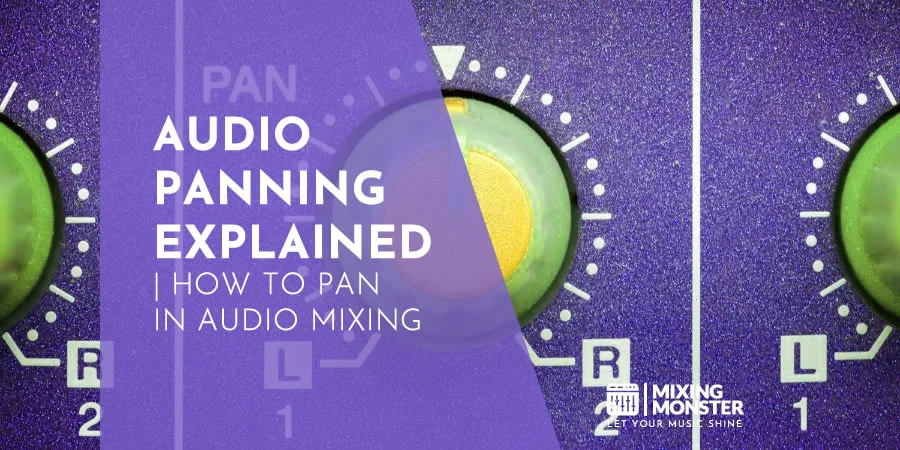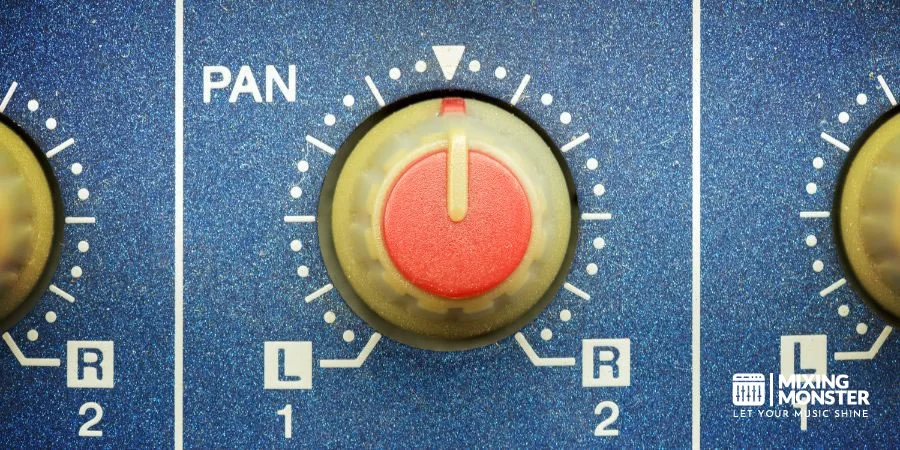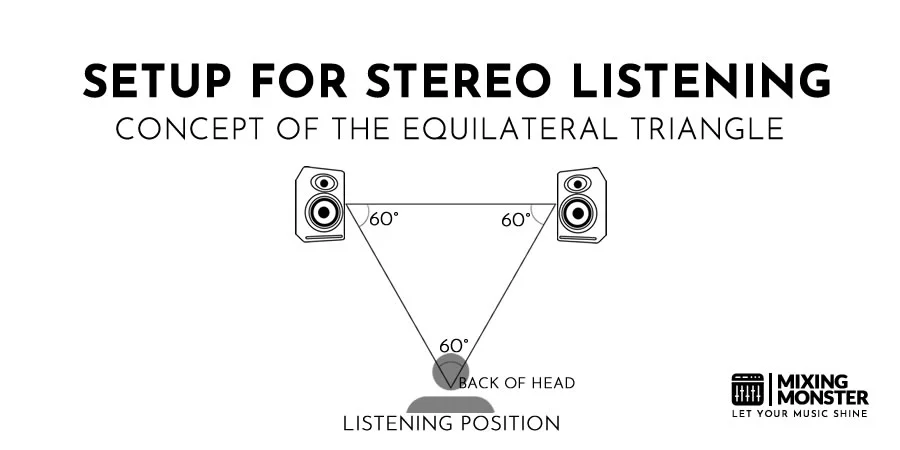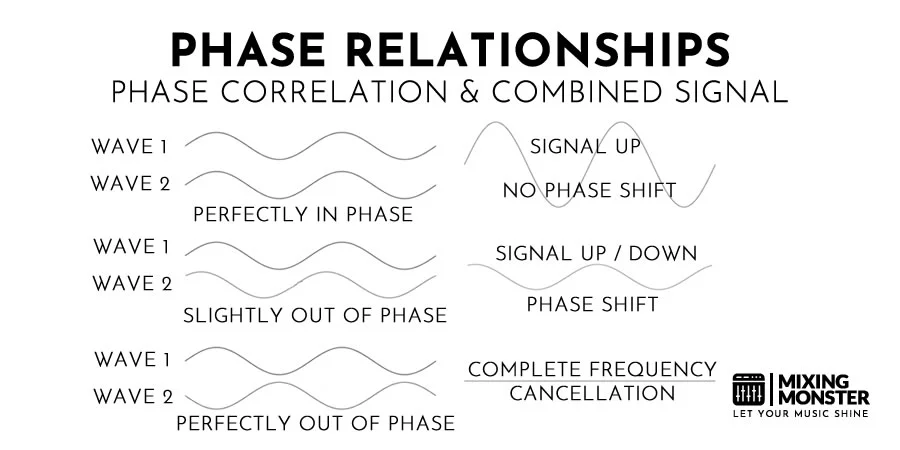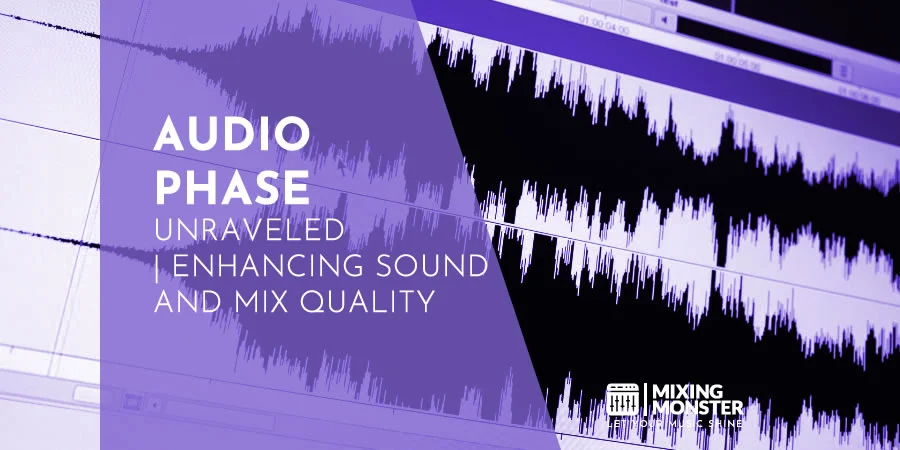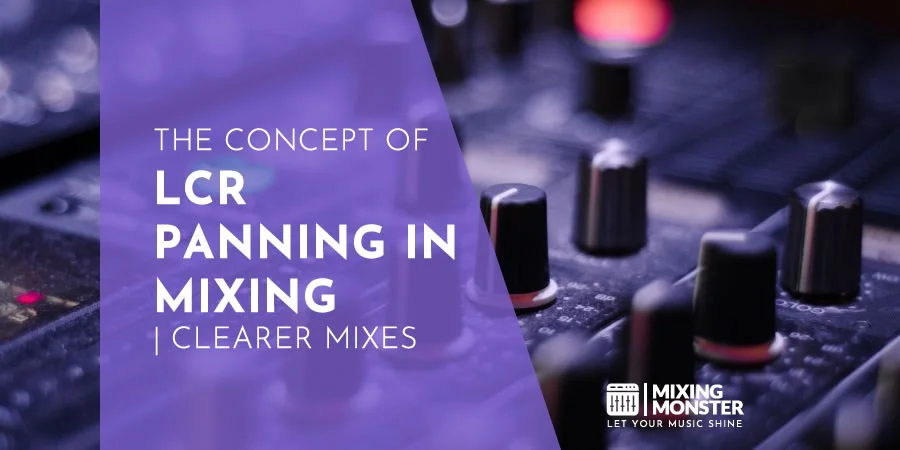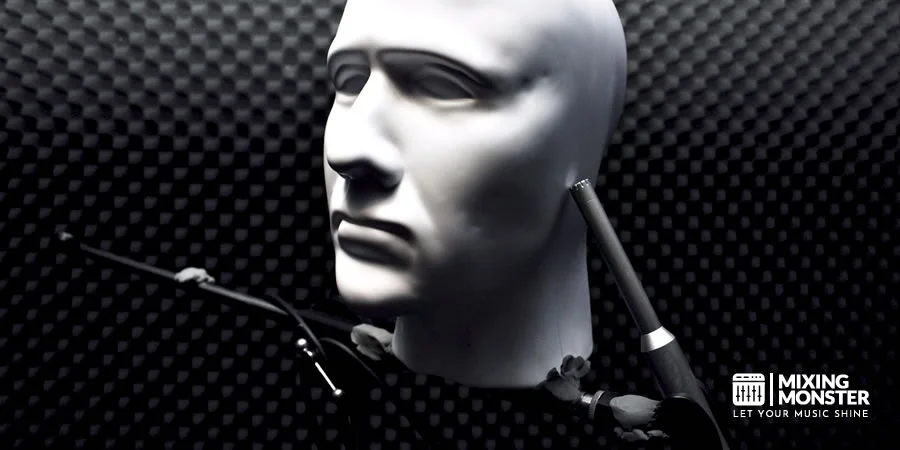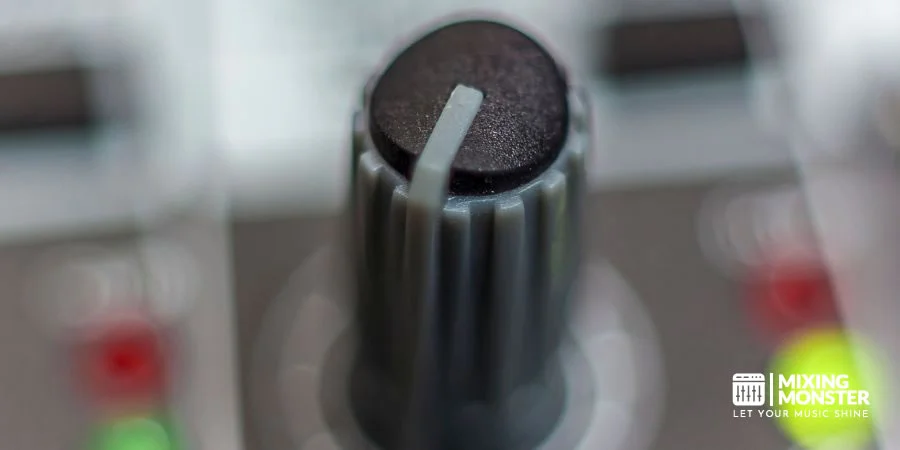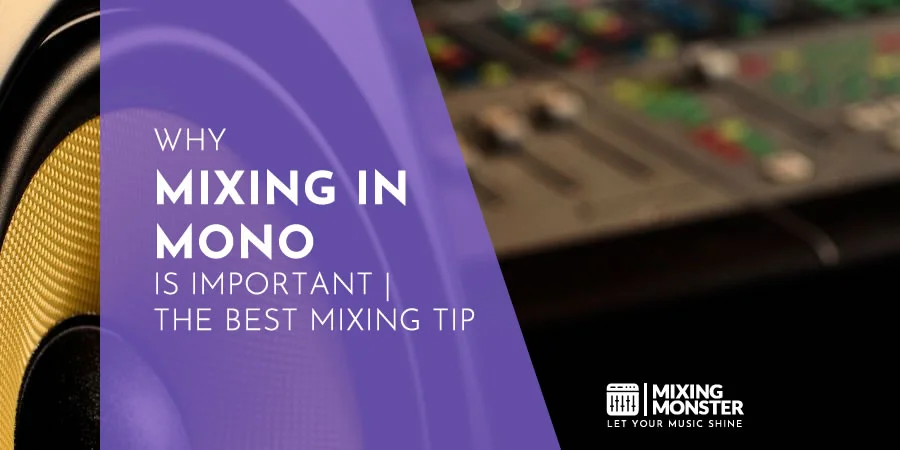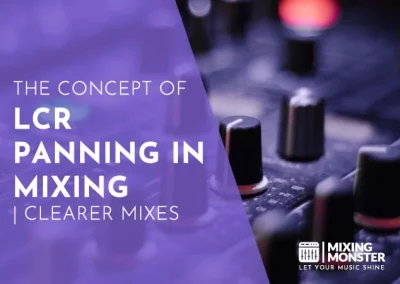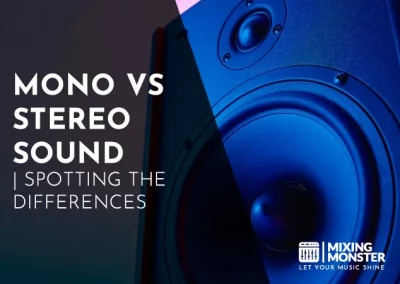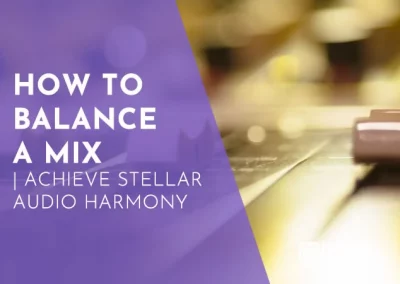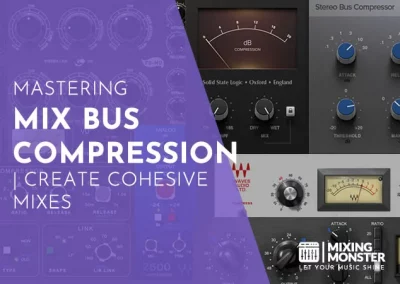Home > Blog > Mixing > Mixing Techniques
In the symphony of sound engineering, the art of audio panning plays a vital role in creating immersive auditory experiences. This comprehensive guide is your backstage pass to mastering this sonic nuance. Let’s dive deeper into audio panning and unlock the potential to transform your mixing game.
Audio panning is a vital technique in sound engineering used to distribute a mono or stereo signal into a stereo or multichannel sound field. It contributes to the spatial positioning of sounds, enhancing listener engagement.
Have you ever wondered how sound engineers create immersive listening experiences where sounds seem to move around you? The secret lies in audio panning – a technique that can transform an austere sound into a symphony. Read on to unlock this sound sorcery!
Table Of Contents
1. Introduction To Audio Panning
2. Understanding The Concept Of Stereo Sound
3. Fundamental Principles Of Audio Panning
4. Techniques Of Audio Panning
5. Practical Guide To Audio Panning In Mixing
6. Advanced Tips And Techniques For Audio Panning
7. Examples Of Successful Use Of Audio Panning
8. Taking Your Mixes To The Next Level With Audio Panning
9. FAQ

1. Introduction To Audio Panning
What Is Audio Panning?
Audio panning is an essential technique in music production and audio mixing that shapes the listener’s experience by controlling the placement of sounds in a stereo or multichannel sound field.
Imagine you’re listening to an orchestra; audio panning allows us to replicate the sense of space and depth you’d get from a live performance. So, you could hear the violins on the left, the cellos on the right, and the timpani towards the back, all from your headphones.
This sense of ‘location’ is the magic of audio panning.
Importance Of Audio Panning In Mixing
Why do we care about audio panning in sound mixing? The answer is simple: clarity, depth, and realism. Panning helps to separate instruments that might otherwise clash if they’re coming from the same ‘spot,’ making your mix sound cleaner and less muddy.
The result? Each sound can shine through more clearly, enabling your audience to appreciate the intricate details in your mix. Moreover, panning adds depth and space to your mixes, making them feel more ‘alive.’
Think of it as painting on a blank canvas – the more space you use, the more detailed and exciting your picture can be.
Now that we’ve discussed what audio panning is and why it’s so crucial in mixing let’s dive deeper into the fundamentals of stereo sound and how panning plays into it. Ready to broaden your audio horizons?
2. Understanding The Concept Of Stereo Sound
Mono Vs. Stereo Sound
To fully grasp the concept of audio panning, it’s crucial to understand the difference between mono and stereo sound. In the simplest terms, mono sound means the sound comes from one source, whereas stereo sound implies two distinct audio sources.
Think of it this way: If you’re listening to a mono recording on a pair of headphones, it’ll feel like the sound is directly in your head’s center. In contrast, a stereo recording will give a sense of width, as if the sound surrounds your head, coming from left and right directions.
The transition from mono to stereo has been a game-changer in audio production, opening up a new world of possibilities, one of which is, you guessed it, audio panning!
In order to make proper panning decisions, you need to set up your studio monitors correctly:
How Stereo Sound Works
So, how does stereo sound create this immersive experience? Stereo sound works by reproducing sound on two independent audio channels, typically recognized as left and right.
This separation allows for the perception of directionality and auditory perspective, a phenomenon closely tied to audio panning.
When sounds from both channels arrive at both ears slightly differently—varying in time, level, or phase—it creates an illusion of a sound source’s spatial location.
This ‘audio illusion’ is precisely what audio panning manipulates to achieve a more vibrant and realistic soundstage. It’s all about painting a rich sonic picture that captivates listeners.
Have we got a handle on the fundamentals of stereo sound? Let’s delve into the underlying principles of audio panning next. Trust us; it’s worth sticking around for.
3. Fundamental Principles Of Audio Panning
Pan Law And Psychoacoustics
Pan Law and psychoacoustics are central to understanding audio panning. Pan Law refers to decreasing the volume of an audio signal as it moves towards the center in a stereo field.
This is done to maintain a consistent perceived loudness across the panorama, given our innate sensitivity to sounds coming directly in front of us.
Meanwhile, psychoacoustics studies how we perceive sound, including our sense of sound direction. A sound from one side reaches one ear slightly earlier and louder than the other.
This tiny discrepancy is what our brain uses to pinpoint the source of the sound. Audio panning utilizes these principles to simulate a three-dimensional sound experience in a stereo mix.
The Role Of Frequency And Phase In Panning
Frequency and phase play essential roles in audio panning. Higher-frequency sounds are more easily localized than lower frequencies.
That’s why high-frequency instruments like cymbals or violins are often panned to create a sense of space, while lower-frequency ones like bass or kick drums are kept central to provide a solid foundation.
Phase, on the other hand, relates to the timing relationship between two or more sound waves. If two identical signals are out of phase and panned to opposite sides, they can cancel each other out, causing a hollow or weak sound, particularly in mono playback.
Want to learn more about audio phase? Here you go:
With these fundamentals in mind, let’s explore the specific techniques of audio panning in the next section. This is where things get interesting, so stick with us!
4. Techniques Of Audio Panning
LCR (Left, Center, Right) Panning
Let’s dive into the first technique: LCR Panning. LCR stands for Left, Center, and Right and is a simple yet powerful approach to audio panning. As the name suggests, you only pan your tracks hard left, dead center, or hard right.
This creates a wide and dramatic stereo image with a strong sense of clarity and separation. It’s a tried-and-true method many professionals favor for its sonic impact and straightforwardness.
Actually, we wrote a full article on the concept of LCR panning! Check this out:
Spectral Panning
Spectral panning is a slightly more complex technique where you pan different sound frequencies to other places in the stereo field. For instance, you might pan the high frequencies of a guitar track to the left and the lower frequencies to the right.
This method can create a unique, ethereal sound space well-suited to ambient and experimental music. Spectral panning allows you to take your listeners on a remarkable auditory journey.
Binaural Panning
The last technique on our list is binaural panning. Binaural panning aims to simulate how we naturally hear sounds in a three-dimensional space, providing a hyper-realistic listening experience when done correctly.
This technique uses complex algorithms to mimic our ears’ slight timing and tonal differences. If you’ve ever felt like a sound in a song was floating right above your head or darting past you, that’s binaural panning at work.
Here is a table summarizing the different panning techniques:
| Panning Technique | Description |
| LCR Panning | A simple and effective method, tracks are only panned hard left, dead center, or hard right. This technique provides a wide and dramatic stereo image with a strong sense of clarity and separation. |
| Spectral Panning | A more complex technique where different frequencies of a sound are panned to different places in the stereo field. This method creates a unique, ethereal sound space suited to ambient and experimental music |
| Binaural Panning | This technique simulates how we naturally hear sounds in a three-dimensional space, providing a hyper-realistic listening experience. It uses complex algorithms to mimic our ears’ slight timing and tonal differences. |
Now that you know these techniques, let’s move on to a practical guide on using audio panning in your mixes. We’re about to turn theory into practice, so gear up!

5. Practical Guide To Audio Panning In Mixing
Step-By-Step Process Of Panning
Follow this step-by-step process to begin panning in your mixes:
- Start Listening In Mono:
Mixing in mono helps identify and fix frequency clashes between different instruments. It allows you to focus on leveling and EQing without the distraction of panning. - Identify The Anchor Elements:
These are the core elements of your mix, typically the vocals, kick, snare, and bass. These should usually remain in the center as they provide the foundation for your mix. - Choose Your Panning Strategy:
Decide whether you will use LCR panning, spectral panning, binaural panning, or a combination. - Start Panning:
Start with the elements that require the most space and work towards those that need less. - Check Your Mix In Mono:
This will help ensure your mix keeps crucial elements when played back in mono.
How To Achieve Balance And Depth In Your Mixes
Achieving a sense of balance and depth in your mixes is crucial and can be attained through careful panning. Aim for symmetry in your mix – if you pan an instrument to the left, try to balance it with another instrument on the right.
Additionally, consider using reverb and delay effects, which can enhance a mix’s depth and spatial characteristics.
Common Audio Panning Mistakes To Avoid
Avoiding common mistakes can significantly improve your audio panning skills:
- Over-Panning:
Don’t pan just for the sake of panning. It should serve the song and not distract the listener. - Ignoring Phase Issues:
Be wary of phase cancellation, especially when dealing with multi-mic recordings. - Forgetting To Check In Mono:
Always check your mix in mono to ensure it translates well across all playback systems.
By now, you should understand why mixing in mono is a good idea, don’t you?
Remember, practice makes perfect. So, keep going even if your initial attempts aren’t perfect. Keep refining your skills, and you’ll be a panning pro soon!
6. Advanced Tips And Techniques For Audio Panning
Automating Panning For Dynamic Mixes
After mastering the basics of audio panning, it’s time to explore more advanced techniques. Automation can add an extra layer of depth and interest to your mixes. You can move an audio source across the stereo field over time by automating panning.
This can be used to follow an instrument’s movement on stage or to create a sense of motion in an otherwise static mix. Remember, automation is a tool to serve the music. Use it sparingly and with a purpose.
Creative Use Of Panning For Sound Design
Panning can also be an invaluable tool for sound design. For instance, you could pan a reverb or delay return to a different position from the dry sound, creating a more expansive stereo image.
Similarly, using different panning positions for additional synth pad layers can make it feel larger and more enveloping. By thinking outside the box and experimenting, you can use panning to create unique sonic landscapes that captivate your audience.
Keep pushing the boundaries and always experiment with new techniques. The rules of audio panning are guidelines, but the most innovative sounds often come from daring to defy conventions!
Ready for some inspiration? Let’s explore examples of successful audio panning in the next section.
7. Examples Of Successful Use Of Audio Panning
Classic Albums And The Art Of Panning
Classic albums often provide excellent examples of successful audio panning. Let’s take the Beatles’ “Sgt. Pepper’s Lonely Hearts Club Band” as an example. This album is renowned for its pioneering use of audio panning, creating a sense of breadth and depth that was groundbreaking for its time.
Listen to “Lucy in the Sky with Diamonds” for an instance of hard LCR panning or “A Day in the Life” for a stunning use of automated panning.
Modern Examples Of Effective Panning
There’s no shortage of superb panning examples in the modern music scene. Billie Eilish’s “When the Party’s Over” utilizes spectral panning and subtle LCR movements to create an intimate yet expansive sound space.
Similarly, Travis Scott’s “SICKO MODE” employs creative panning techniques to add dynamism and interest throughout the track.
Analyzing the work of skilled mix engineers can provide invaluable insights into effective audio panning. So, next time you listen to your favorite tracks, focus on the stereo field and see what you can learn.
Now that we’re inspired let’s discuss how you can use audio panning to take your mixes to the next level. Are you ready to level up your mixing game?
8. Taking Your Mixes To The Next Level With Audio Panning
Audio panning is a powerful tool that can elevate your mixes from good to extraordinary when used thoughtfully and creatively. Here are some ways to use audio panning to enhance your mixes:
- Create A Spacious Mix:
You can create a more spacious and detailed mix by distributing different elements across the stereo field. This can help your music to sound more professional and polished. - Add Interest And Variety:
Panning can make your mix more engaging by adding movement and variety. For instance, you might pan a guitar solo to one side to make it stand out or use automated panning to add a sense of motion. - Enhance The Listener’s Experience:
With strategic panning, you can guide your listener’s attention and create a more immersive listening experience. For instance, you might pan the elements of a virtual “band” to match their positions on a stage, helping your listener to visualize the performance.
By leveraging these techniques, you can use audio panning to bring a new level of depth, detail, and professionalism to your mixes. So get creative, experiment, and see how audio panning can transform your mixing process. Your audience will thank you!
Always remember that the best approach is the one that serves the song and resonates with your creative vision.
Happy panning!
9. FAQ
- What Is The Purpose Of Audio Panning In A Mix?
The primary purpose of audio panning in a mix is to create a spacious, three-dimensional sound field that provides a realistic and immersive listening experience. You can achieve clarity, balance, and depth in your mixes by carefully positioning different elements across the stereo field. - When Should I Use Center, Left, Or Right Panning?
Center panning is generally used for the core elements of a mix, such as vocals, kick, snare, and bass. Left and right panning create a sense of width and space in the mix. The specific panning decisions depend on the creative intent and the song’s needs. - Can Audio Panning Help My Mix Sound Better On Headphones?
Yes, audio panning can significantly enhance the listening experience on headphones by creating a realistic, three-dimensional sound field. Techniques such as binaural panning can be particularly effective for headphone listeners. - How Do I Decide Which Instruments To Pan?
Deciding which instruments to pan largely depends on the song’s needs and your creative vision. However, a general guideline is to pan the foundational elements (low-end content) in the center and use the left and proper space for additional elements to create a balanced and spacious mix. - What Is The Difference Between Balance And Pan?
While both balance and pan adjust the levels between the left and proper channels, they do so differently. Balance control adjusts the levels of pre-existing left and right channels, while pan control positions a mono signal within a stereo field.

